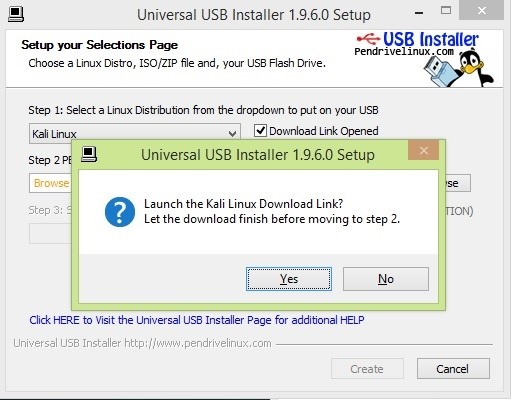



In this example our USB is mounted as drive “F:\”.Flash the ISO image with Etcher. Make a note of the drive letter that your drive uses once it mounts. Creating a Bootable Kali USB Drive on Mac OSCreating a Bootable Kali USB Drive on WindowsConnect your USB thumb drive to the system and make sure it can store at least 4GB of data.
Make sure you identify the correct device path for your USB. You can also verify the size matches the approximate size of your USB thumb drive. Now connect the USB drive and make sure it has at least 4GB of available space.Run the fdisk -l command again and identify the newly added device name. Creating a Bootable Kali USB on LinuxUse fdisk -l from the command line to view the disks and their device paths. Simply select the ISO file you previously downloaded and the appropriate drive letter.After the flashing process is complete, you can safely eject the USB and use it to boot Kali Linux.
Creating A Persevance Kali Linux Usb Iso To Our
Dd if=kali-linux-2020.1b-live-amd64.iso of=/dev/disk4 bs=4MThis command copies our input file ( if), kali-linux-2020.1b-live-amd64.iso to our output ‘file’ ( of) /dev/disk4. Dd is a powerful command especially when run as root! You can easily overwrite your primary disk if you enter the wrong device name. Be careful when typing this command. Other systems may show the device path as /dev/sdb or similar.After triple checking that you have the correct device you can proceed to copy the ISO to the USB disk.
You can press CTRL-T to see how many bytes dd has copied so far. On some systems this process can take upwards of 30 minutes. Just be patient and wait for the command to complete.
This can be used to estimate the time remaining. Pressing CTRL-T will show how many bytes have been processed by dd so far. Be careful with the dd command and double check that you have the correct device! dd if=kali-linux-2020.1b-live-amd64.iso of=/dev/disk6 bs=4MCopying the ISO takes time (up to half an hour on some systems) so be patient. In our example our USB drive is available at /dev/disk2.Now unmount the drive with diskutil: diskutil unmountDisk /dev/disk2And now CAREFULLY copy the Kali Linux ISO to the USB drive. You should see a new device in the list that matches the size of your USB drive.
Physical access is a holy-grail during penetration testing as it spells almost immediate game-over for the defenders. Theoretically you can boot Kali Linux on almost any machine you have physical access to.


 0 kommentar(er)
0 kommentar(er)
